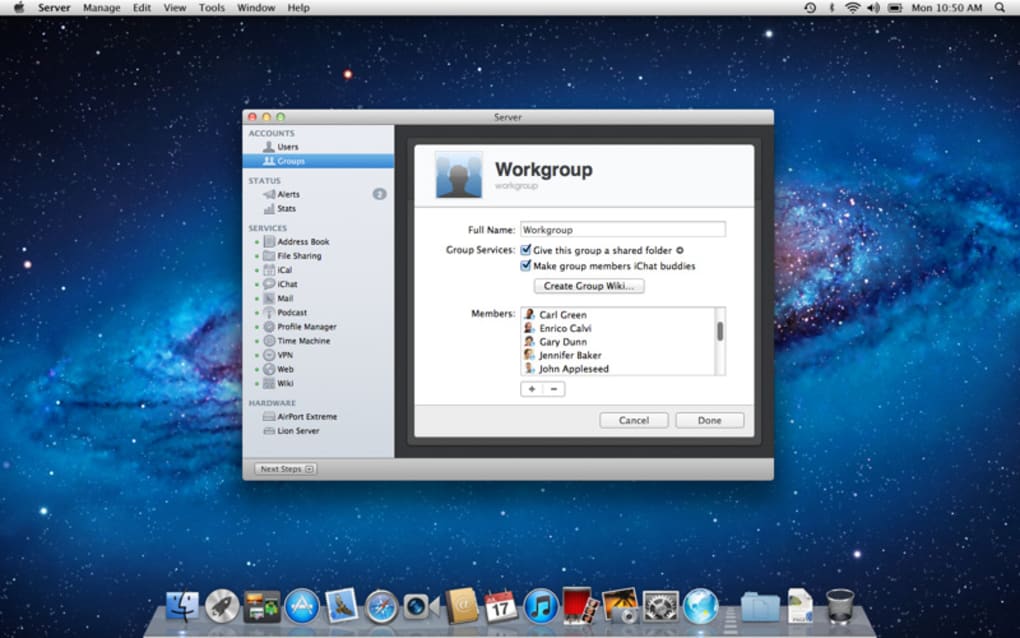

After killing off Imaging and NetBoot/NetInstall, now there is a new support article: There is a common understanding that celebrity deaths come in groups of three. Please check it out: “ macOS Installation for Apple Administrators“ - see also this article’s list of references.I have written a book which expands on this topic and is regularly updated.- my main source, although it covers much more than just certificate installation.macOS 10.12/Server 5.3 does not appear to have this issue. The only workaround is to manually switch each site’s certificate to the self-signed and then back using Server.app upon each renewal. If any of those sites has an SSL variant, entries are created for both the proper and the self-signed certificate, which causes Apache to simply stop working. The background process responsible for updating /Library/Server/Web/Config/Proxy/apache_serviceproxy_nf whenever a certificate is imported into the keychain adds duplicate entries for each site other than the default defined in the Websites panel. I ran into this bug in OS X 10.11/Server 5.2.For this reason it isn’t necessary for us to stop and start the web server when a certificate is updated. According to its man page, each change to the keychain runs certupdate which in turn runs several other helper tools.I haven’t tested this with multi-domain or multiple certificates, but I’ve no reason to believe it wouldn’t work as long as appropriate renewal conf file modifications are made.Each invocation of certbot creates a new log file in /var/log/letsencrypt, so a new line at the end of the certificate import script above cleans out all but the last ten log files.(It’s possible to modify its environment with the EnvironmentVariables key, but this is more concise.)
MACOS SERVER APP FULL
The launchd item uses a full path to certbot because its parent directory, /usr/local/bin, is not in the $PATH of the environment used by launchd items.Assuming an SSL variant of your site already exists (check the list in “Websites”), select the new certificate from the “Secure services using:” popup to start using it. If you now open Server.app and click on “Certificates”, you should see your new certificate listed there. 2 certificates imported.” indicates the script ran successfully. Sudo /etc/letsencrypt/renewal-hooks/deploy/keychain-import.sh Sudo chmod +x /etc/letsencrypt/renewal-hooks/deploy/keychain-import.sh
MACOS SERVER APP UPDATE
Update 2022-03: Based on feedback, reordered logic and added a restart of the web server to ensure the new certificate completely replaces the old. # Clean up old certbot log files rm -f /var/log/letsencrypt/letsencrypt.log.? Openssl pkcs12 -export -inkey " $ | grep "1)" | cut -d " " -f 4 ) /Library/Keychains/System.keychainĭone # Restart web server so it uses the new certificates # Loop through subdirectories of /etc/letsencrypt/liveįind /etc/letsencrypt/live -type d -maxdepth 1 -mindepth 1 | while read PEM_FOLDERĭOMAIN = $( basename $PEM_FOLDER ) # Generate a passphrase PASS = $(openssl rand -base64 45 | tr -d / =+ | cut -c -30 ) # Transform the pem files into a p12 file #!/bin/sh & echo "Must be run as root." & exit 1 (Older tutorials may refer to the package’s original name, letsencrypt.)
MACOS SERVER APP INSTALL
Use Homebrew to install certbot, which handles the creation and renewal of certificates from Let’s Encrypt. a domain name configured in public DNS to point to your IP address.an internet connection with a fixed IP address.port 80 and 443 configured on your router to forward to your Mac.(Mine is still running OS X 10.11 yours should probably be something newer.)

MACOS SERVER APP MAC


 0 kommentar(er)
0 kommentar(er)
